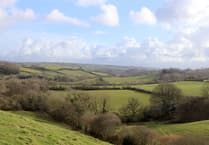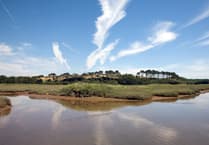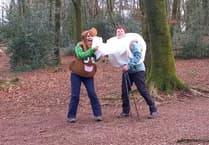DEVON is a wonderfully large and picturesque county, indeed the only county in the world to give its name to an entire period in geological time – the Devonian.
Covering an area of some 80 square miles we have a climate ranging from the sub-tropic to the sub arctic. So, it should be no surprise that Devon is home to over 2,500 different wild flowering plants, not including the historically ancient mosses, ferns, lichens and conifer trees.
We also have two mountains, High Willhays and Yes Tor, both over 2,000 feet. Also, two very different coastlines and two beautiful National Parks. No wonder we have a greater diversity of wildlife and wild places than almost any other area of similar size on earth.
We are also becoming one of the most crowded with people. In many places nature is under pressure. Even new lighting in previous unlit parts, can cause local extinctions of wild animals far beyond our garden borders.
But there are many creatures that live surprisingly close to us, yet we hardly ever see. One of the best known but secretive in Devon is the smallest of a very successful group. The weasel is by far the smallest member of the stoat, otter and badger family.
Yet what they lack in size they more than make up in attitude. The weasel is a feisty bundle of energy, barely the length of a human hand, fast moving and furious in pursuit of prey. It is said that a weasel can even pass through a wedding ring.
With such short legs they can easily negotiate a mouse hole, especially when after their favourite meal. Books happily tell us that unlike the larger stoat, weasels have no black tip to their tail.
But considering the speed at which most weasels live their frantic little lives, perhaps dashing across a lane or peering for a split second from a stone wall, we are unlikely to have time to see a tail.
There is also an old saying that is even more unhelpful, ‘weasels be weasily recognised, because stoats are stoatally different’. Perhaps more useful is that unlike the stoat that has a bounding gait, leaping with an arched back, the weasel streaks across open ground keeping their little backs straight.
Once described to me as more like a ‘supersonic cocktail sausage’. The weasel is widespread throughout the British mainland and surprisingly common across Devon’s countryside and gardens, even if we never see them.
Considering their hectic life style, it is perhaps no surprise that the life span of a weasel is short, around two years. But they pack a lot into that time. Females produce four litters of up to six kits each time.
To watch a family of weasels on one of their first riotous outings at any time of the year is a sight once seen, never forgotten. Intelligent, wary yet curious, they and other members of their wider family are among the most ancient natives of Devon long before we arrived.




